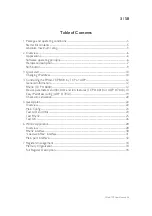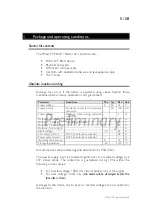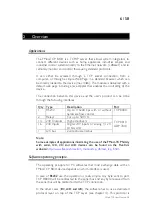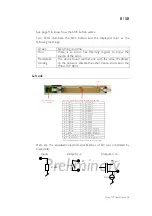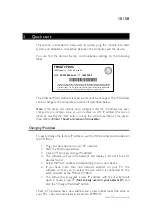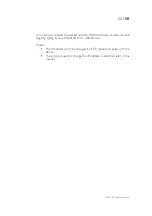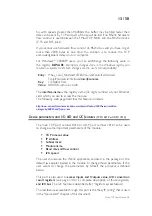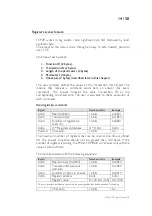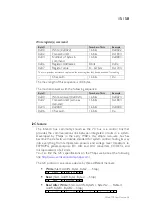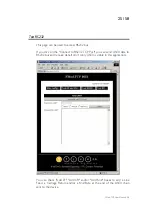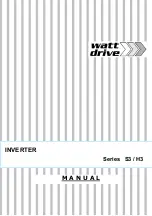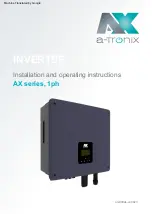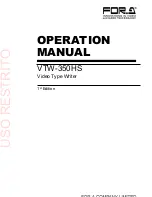
13 / 58
So, with speeds greater than 9600bds, the buffer may be filled faster than
data can be sent by TCP and part of those will be lost if no RS232 hardware
flow control is used between the FMod-TCP BOX and the RS232 device
(CTS and RTS lines).
If you cannot use hardware flow control on RS232 bus and you have to get
more than 2048 bytes at one time, the solution is to reduce the TCP
acknowledgement delay on your computer.
For Windows
TM
2000/XP users, you can add/change the following value in
the registry.
BEWARE
:
improperly changes done in the Windows registry can
results in a system crash! Such changes are the user’s full responsibility!
Entry:
HKey_Local_Machine\SYSTEM\CurrentControlSet\Services\
Tcpip\Parameters\Interfaces\
Interface-name
Key:
TcpDelAckTicks
Value:
DWORD with value 0x00
The
interface-name
is the registry name (32 digits number) of your Ethernet
card which you use to access the module.
The following web page describes this feature in details:
Device parameters and I/O, A/D and I2C features
(TCP # 8010 or UDP # 7010)
The main TCP port number 8010 or UDP port number 7010 can be used
to change some important parameters of the module:
TCP timeout value
IP address
Subnet mask
Module name
Baud rate and flow control
I2C speed
The user should use the Win32 application enclosed in the package or the
default java applet loaded in the module to change those parameters. If the
user wants to change the parameters by himself, the protocol is defined
below.
This port is also used to
access Inputs and Outputs value, A/D conversion
result registers
(see page 34 for a complete description of those registers)
and I2C bus
. The I2C feature is described after “registers access feature”.
The last feature accessible through this port is the "Easy IP config" that is used
in the "Quick start" chapter of this document.
FMod-TCP User Manual v.2.8



